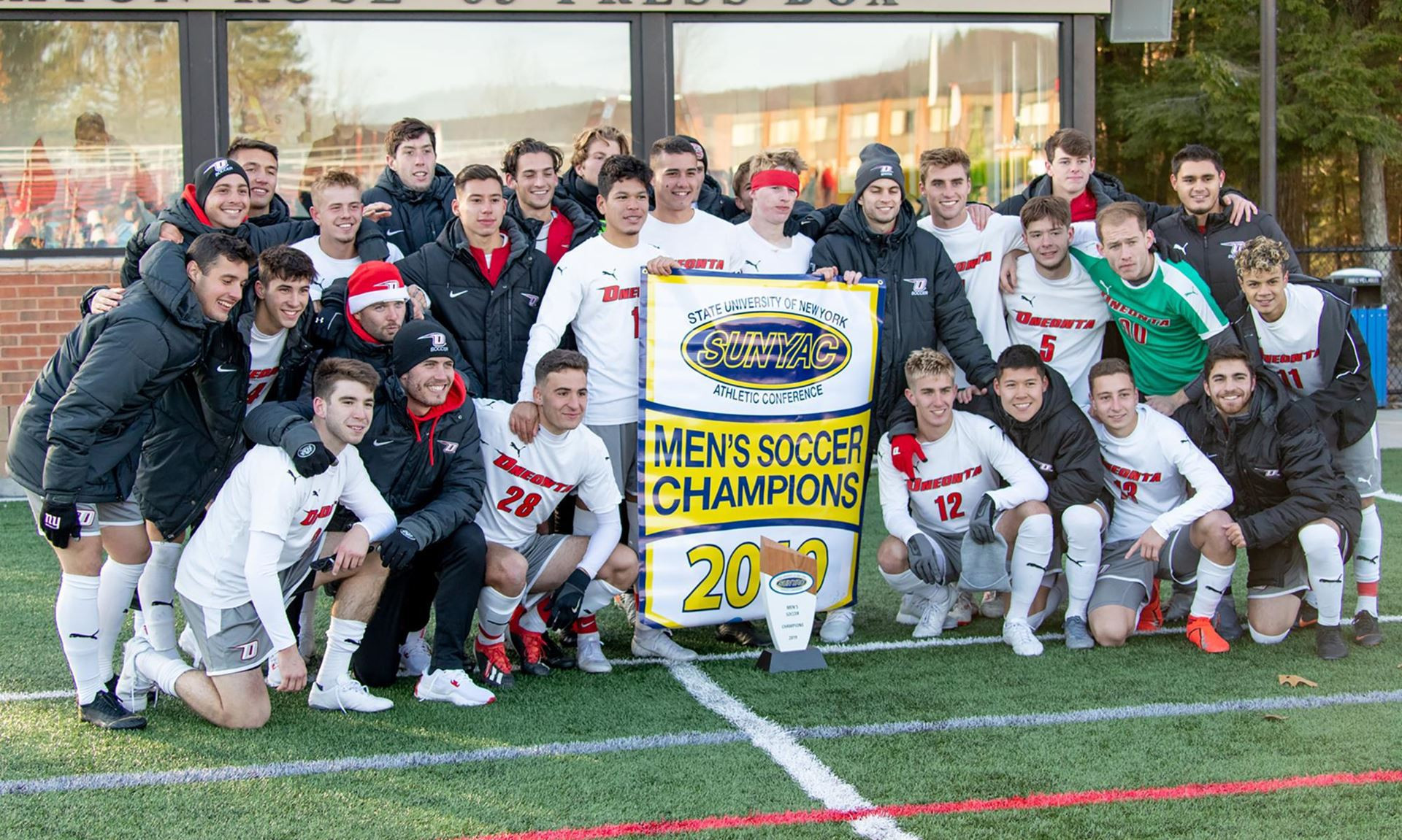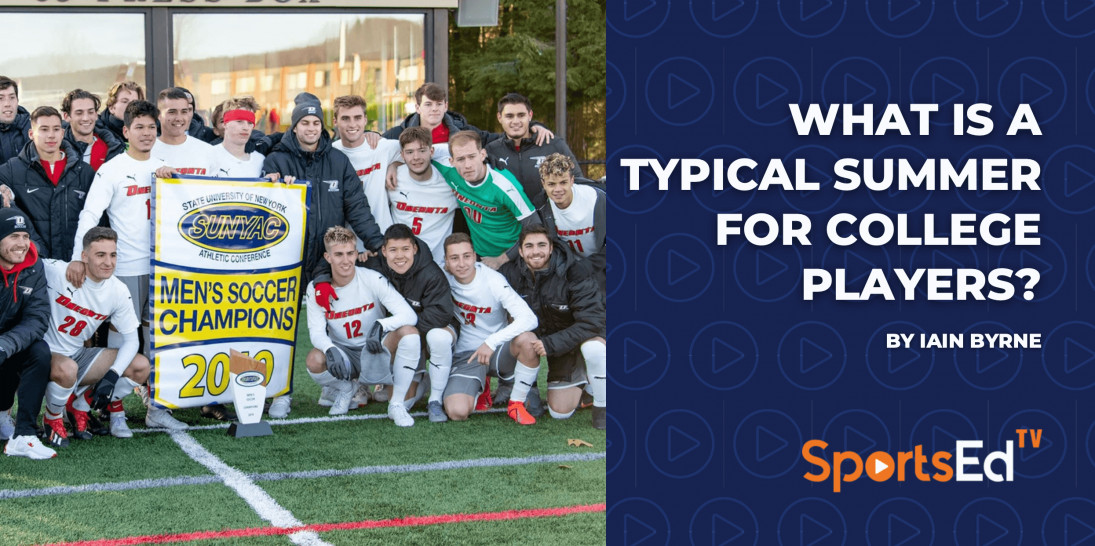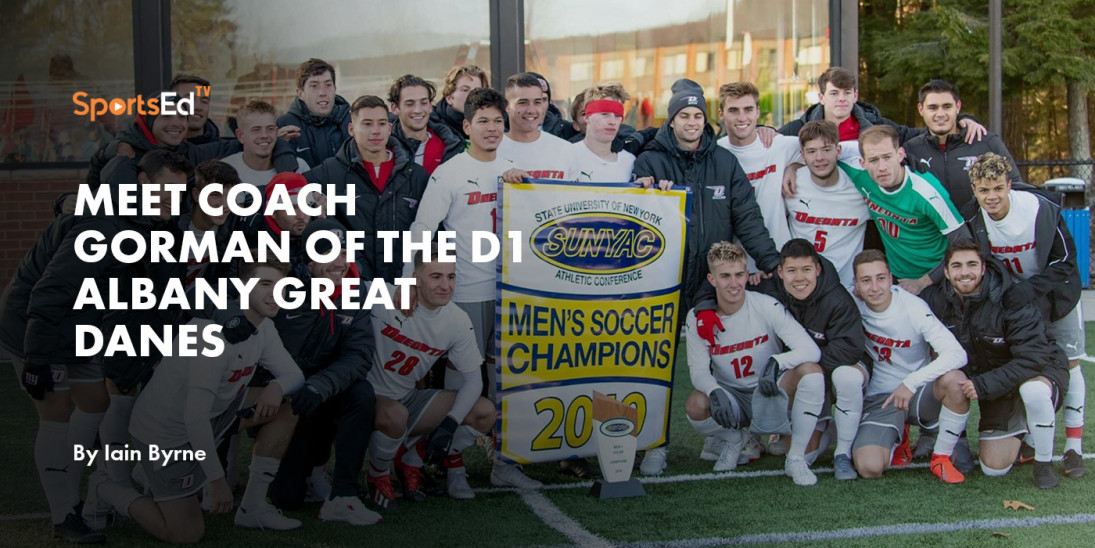Soccer
Welcome and thanks for visiting...

Just How Do I Go About Playing College Soccer?

Hello to all you future Lionel Messi’s, and Jurgen Klopp wannabes:
I am back for another go-round with your favorite blogger. With this shutdown showing no signs of relenting, and golf being rained out for another day, I thought I would tackle a question I am asked more than any other!
What do I have to do to get on a college soccer team?
Well….if you are Lionel Messi it is pretty straightforward as every college coach in the country will want you, but for everyone else, you will certainly need a plan of action.
What makes the college recruiting process so difficult for players and families?
The number one challenge is figuring out which schools are realistic for you. Many players come up with a list of schools they would like to go to without truly knowing if they would be a good fit for those schools. They spend a lot of time (and in some cases, money) targeting these schools and don’t gain any traction.
The truth is that both women’s and men’s college soccer teams have a lot of prospective soccer players to select. Depending on the college and NCAA division, you can be competing with hundreds of recruits for only 4 – 10 roster spots per team. About 8% of high school men’s soccer players go on to play in college, and only about 1% go on to play for a Division one college.
Coming up with a realistic plan of action can be confusing and intimidating, so that’s why I’m here and at your service.
Step 1: RESEARCH SCHOOLS AND CREATE A TARGET LIST:
Once you have determined the division level your skill set is best suited for, it’s time to start putting together a list of target schools. You need to consider whether you want a big school in a small town if you are comfortable attending a school that’s in a different state, how important class size is, and more. Start with a list of 20 to 30 schools and then start contacting college coaches and whittling the list down to preferred schools. While putting together the list, organize it into the following categories:
- 5–10 safety schools: These schools should be easy to get into, athletically, and academically. While they may not be top choices, you would be comfortable going to school there for four years.
- 10–15 target schools: Target schools are top picks, athletically, and academically. You should have a good shot at getting into these schools and should get excited at the thought of attending them
- 5–10 reach schools: Maybe it is the price tag or the fact that they are academically competitive—whatever the reason, these programs might be just out of reach. For most recruits, this list is comprised of Division 1 and academically rigorous colleges. Getting into these schools might be a longshot, but that does not mean it is not a shot worth taking.
Step 2: Complete each Soccer Questionnaire:
Almost every college soccer team in NCAA Division 1, 2, and 3 has a soccer questionnaire that is available for prospective students to fill out on their team website. A completed questionnaire allows potential recruits to put themselves in the college coach’s system of communication. Once you have identified the college soccer programs of your choice, go to their websites and fill out their soccer questionnaires immediately. The earlier, the better. This action will alert college soccer coaches that you are indeed interested in their soccer program and supply them with the correct contact information for when their staff is attending tournaments, hosting clinics or camps, and having visitation days.
Step 3: Design Your Player profile:
Create a simple one-page player profile that included your personal information, your playing particulars, and your academic accomplishments. Do not fabricate your academic standing; the truth will be revealed once you submit your transcripts, so don’t inflate your scores.
Step 4: Make your Highlight Video
A great recruiting video can be a difference-maker. While coaches prefer evaluating players in person, a well-done recruiting video can make athletes stand out among comparable recruits.
In a recruiting video, coaches want to see match footage with field players making 20–25 plays. For goalies, a mix of match footage and skills footage is best. Here are some other tips for making a top-notch recruiting video:
- Keep the video short and sweet—three to six minutes at the most. We don’t want to watch the same play over again and again in slow motion!
- Don’t waste time on an intro and music. Us coaches don’t care about these “eye-catching” additions.
- Stack your best plays in the beginning. Start your video off with a bang to get the coach’s attention.
Step 5. HOW TO CONTACT COLLEGE COACHES
- Once you have contact information for the coaches on your target list, you should start to implement your plan.
- As advised above, complete the recruiting questionnaire for every school you are interested in.
- Send an introductory email to each college coach that includes a highlight video and your player profile.
- Follow up with a call to each coach, mentioning the introductory email.
- If a coach doesn’t answer, leave a voicemail and make sure to tell them when to expect a call next.
- Respond to all correspondence from coaches, including letters, emails, social media direct messages, and everything else.
- Continue to follow up with coaches, sending them updated stats and new highlight videos, inviting them to upcoming games, and congratulating them on recent wins.
Insider tip from Coach Byrne: If you are having a hard time getting in touch with a college coach, ask your high school or club coach to call the college coach and schedule a phone call for you.
Step 6. Give Coaches your showcase tournament schedule.
Let coaches know what soccer tournaments and showcases you are playing in. Coaches have limited resources and need to prioritize what tournaments to go to and who they will be seeing.
Step 7. Don’t be discouraged by a lack of Feedback
If you do not get an email back from the college coach in a timely fashion, it does not necessarily mean that he/she is not interested. College coaches sometimes get over a hundred emails a day, so make sure you follow up.
Step 8. ATTEND College ID Camps
College Soccer ID Camps are a very popular way for coaches to identify potential recruits. Players get to visit the school, meet with the coaches, and play directly in front of them to show what they can do. Some coaches insist that you attend one of their ID Camps, as that confirms your interest in their program.
Step 9. Arrange to Visit the Campus & Meet with the Coach
Do not be afraid to request a meeting with the coach. This is a good time to make a first impression and get a feel for the program. Be prepared for the meeting and ask questions. Make sure you have evaluated the programs of study and majors at the college, so you are able to discuss that with the coach…..which leads to…….
Step 10. Make academics a priority
Grades matter in the college soccer recruiting process. Period. Although many players are enamored with the “full-ride” dream, the reality is academic scholarships are more prevalent, and easier to attain an athletic scholarship. Having a high GPA makes you more attractive to college coaches because better students may require less scholarship or fewer admissions involvement from the college coach.
Wow....I just covered 10 steps. Why does it feel like I just climbed Machu Picchu!
Understanding “Scholarship Offers” and how to negotiate them?
For most athletes, the goal of the men’s soccer recruiting process is to get a scholarship offer. One of the first surprises for many student-athletes and their families is the disappointingly low number of full-ride athletic scholarships available. Coaches are not required to give out full-ride scholarships. They can break up the scholarship money as they see fit, and they usually give the most money to their top athletes.
The best bargaining tool athletes have is offers from other schools. Coaches do not want to lose recruits to other institutions, especially rival schools. It is smart to let coaches know that you are considering other teams in their conference.
What about international recruits?
 It is now so common for college coaches to travel internationally to attend showcases in many countries across the globe. While it's true that playing in these events is no guarantee of an offer, they can be mutually beneficial in that they do put you in the shop window and have college coaches in attendance.
It is now so common for college coaches to travel internationally to attend showcases in many countries across the globe. While it's true that playing in these events is no guarantee of an offer, they can be mutually beneficial in that they do put you in the shop window and have college coaches in attendance.
I have personally been to showcases in England, Scotland, Germany, Belgium, and the Virgin Islands. I am optimistically looking for a sponsor for me to attend the Bermuda showcase, so if you have any birthday pennies leftover please keep me in mind!
On a serious note, the D1 landscape is saturated with international players, and it is a pathway into the professional leagues here in the USA after graduation. Just don’t be fooled into thinking that growing up abroad will automatically make you superior to the local-born player. The level of players in the USA is now competitive on the international stage, and they are every bit as attractive to college coaches as players with a foreign accent!
DRILL OF THE WEEK
QUESTIONS
I would be happy to answer questions you have about college soccer in the USA……Shoot straight to iain.byrne@oneonta.edu





